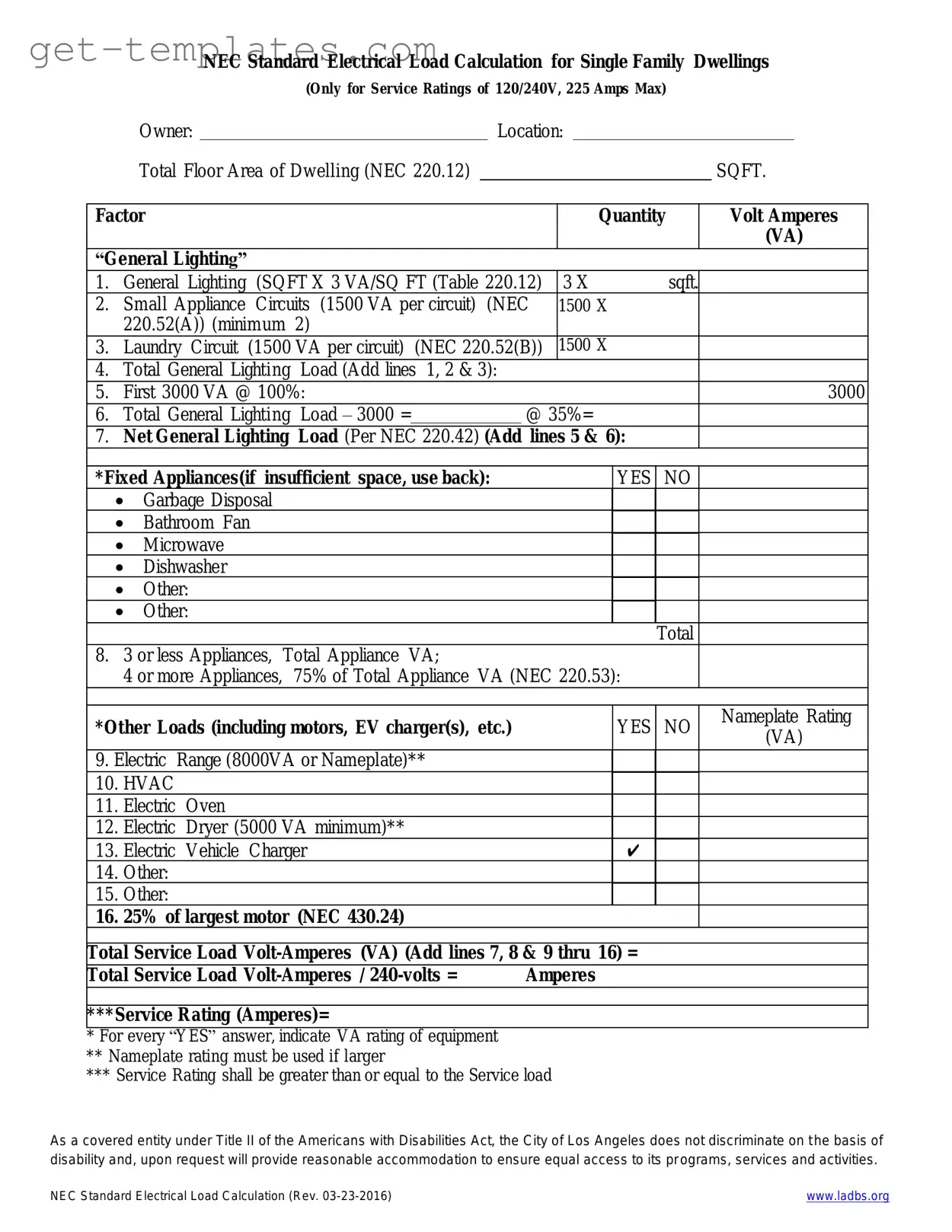The LADBS NEC Standard Electrical Load Calculation form is a document used to determine the electrical load requirements for residential and commercial buildings in compliance with the National Electrical Code (NEC). This form helps ensure that electrical systems are designed to safely handle the anticipated load, preventing potential hazards such as overheating or electrical fires.
This form is typically required for contractors, electricians, and property owners who are planning new electrical installations or modifications to existing systems. Whether you are constructing a new building or upgrading an electrical panel, completing this form is essential for obtaining the necessary permits from the Los Angeles Department of Building and Safety (LADBS).
To accurately complete the LADBS NEC Standard Electrical Load Calculation form, you will need to provide several key pieces of information, including:
-
Type of occupancy (residential, commercial, etc.)
-
Total square footage of the space
-
Number and type of appliances or equipment that will be used
-
Demand factors as specified by the NEC
-
Any additional loads, such as HVAC systems or electric vehicle charging stations
Gathering this information beforehand will streamline the process and ensure accuracy in your calculations.
How do I calculate the electrical load?
Calculating the electrical load involves several steps. Start by listing all the electrical appliances and equipment that will be used in the building. Each item will have a specific wattage rating. Once you have this information, follow these steps:
-
Add up the wattage of all the devices to get the total load.
-
Apply demand factors as outlined in the NEC to account for simultaneous usage.
-
Convert the total wattage to amperage by dividing by the voltage (typically 120 or 240 volts).
This calculation will provide a clear picture of the electrical requirements, ensuring that the system is adequately sized.
Failing to submit the LADBS NEC Standard Electrical Load Calculation form can lead to several complications. Without this form, your electrical installation may not comply with local codes, which could result in delays in obtaining necessary permits. Additionally, it may lead to safety hazards, as improperly sized electrical systems can cause malfunctions or fires. Ultimately, compliance is crucial for both safety and legal reasons.
The LADBS NEC Standard Electrical Load Calculation form can be obtained directly from the Los Angeles Department of Building and Safety's website. Alternatively, you can visit their local office to request a physical copy. It’s advisable to check for any updates or revisions to the form to ensure that you are using the most current version.

